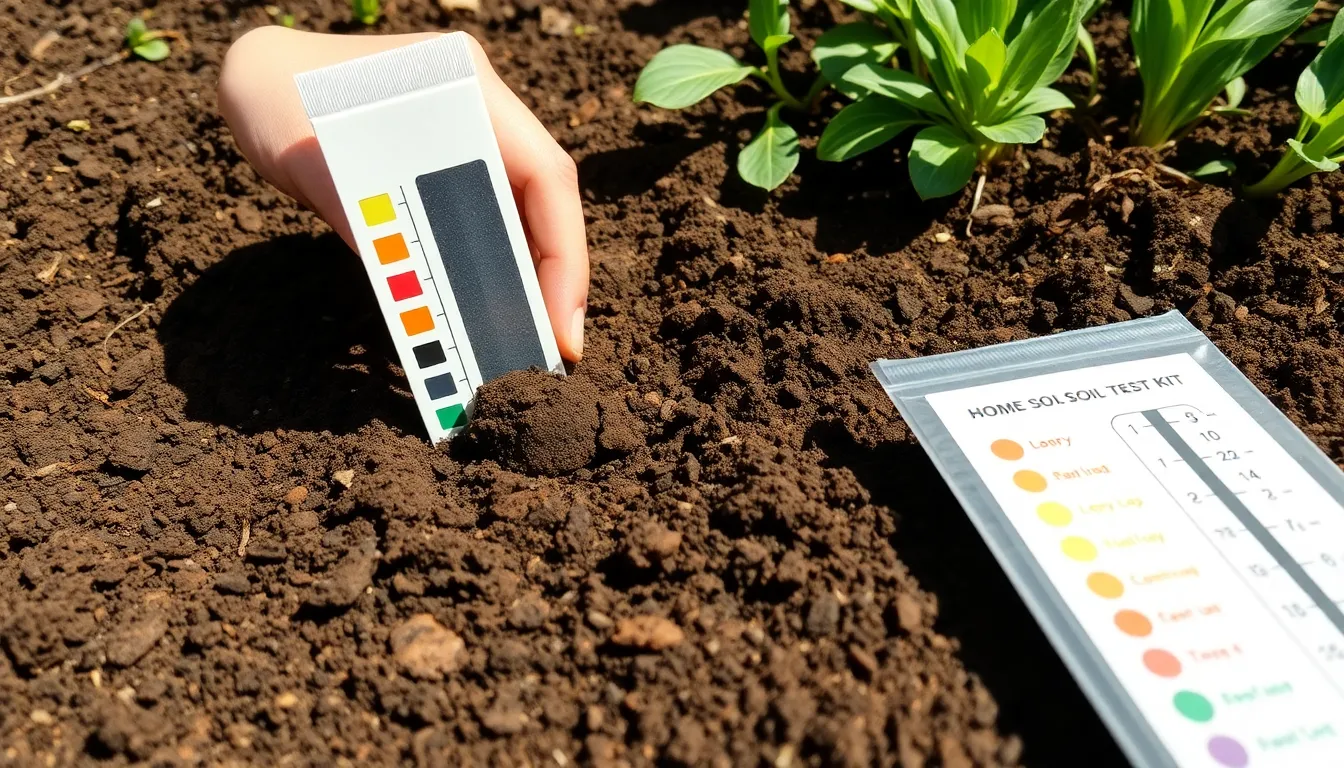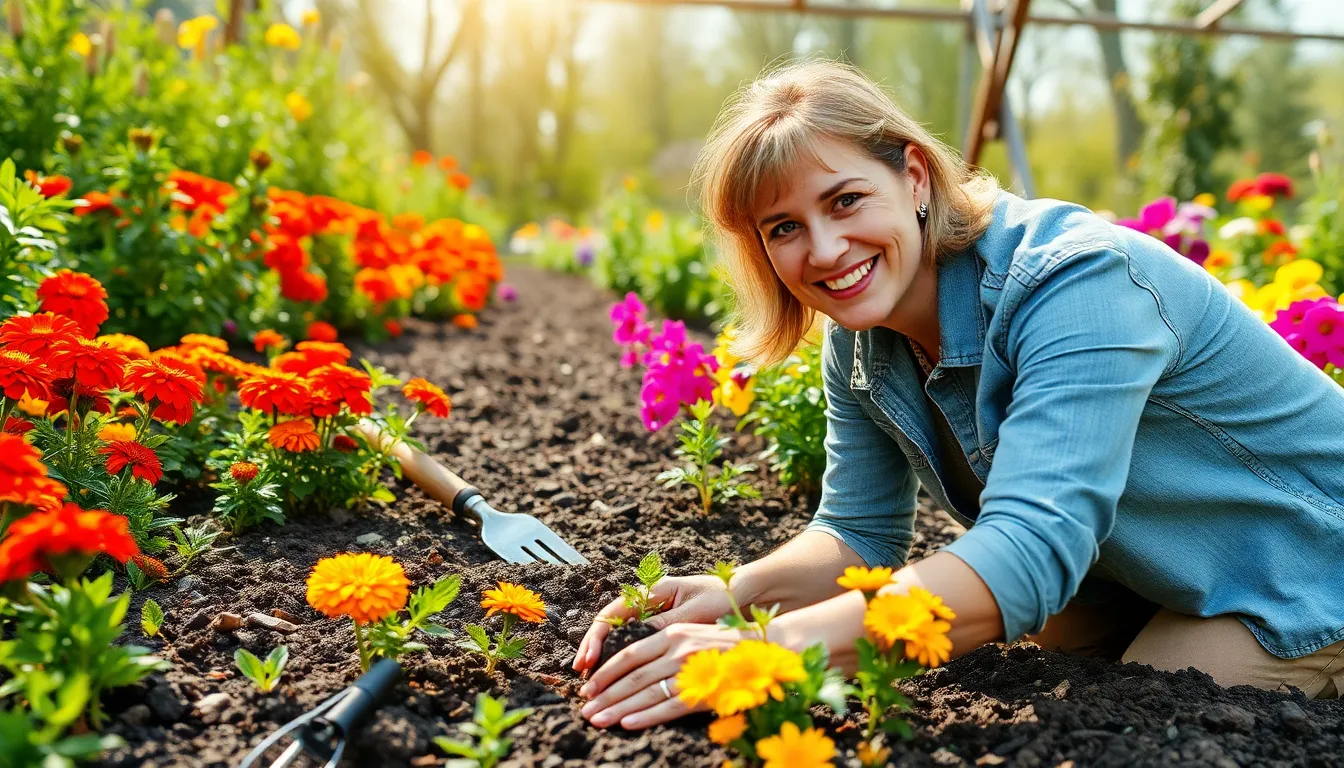As winter bids farewell and spring bursts onto the scene, it’s time for garden enthusiasts to shake off the frost and dig into their favorite pastime. Whether you’re a seasoned green thumb or a budding novice, spring gardening offers a fresh canvas for creativity and growth. Imagine lush blooms, vibrant veggies, and the sweet satisfaction of nurturing life from seed to sprout—all while soaking up the sun and enjoying the great outdoors.
Spring Gardening Tips
Spring gardening tips play a crucial role in maximizing plant health and yield. Gardeners gain insights on planting timelines, ensuring optimal growth by aligning with seasonal conditions. Effective spring strategies lead to healthier plants and more vibrant gardens.
Planning ahead supports the overall gardening experience. Researching which plants thrive in specific climates allows for better selection of flowers and vegetables. Selecting the right varieties based on local conditions enhances the chances of successful gardening.
Soil preparation takes center stage in spring gardening. Testing soil pH levels helps identify nutrient requirements. Enriching the soil with organic compost boosts fertility. Improving soil structure fosters strong root development in various plants.
Timing for planting impacts the growth cycle. Knowing the last frost date informs when to sow seeds or transplant seedlings. Implementing staggered planting schedules ensures a continuous harvest throughout the growing season.
Understanding pest management early in the season reduces potential damage. Identifying common pests and diseases enables proactive measures. Utilizing companion planting creates a natural defense against infestations.
Incorporating efficient watering techniques supports plant survival. Establishing a consistent watering schedule prevents over or underwatering. Incorporating mulch retains soil moisture while suppressing weeds.
Adhering to spring gardening tips nurtures a productive garden space. Following these guidelines empowers gardeners to cultivate thriving landscapes filled with beauty and bounty. Implementing best practices enhances the overall gardening journey and promotes sustainability.
Preparing Your Garden Soil

Preparing garden soil properly sets the foundation for a successful spring planting season. Focus on soil quality and nutrient enhancement to promote healthy plant growth.
Testing Soil Quality
Testing soil quality provides essential information about its pH, nutrient levels, and structure. Gardeners can use home test kits or send samples to local extension services for accurate analysis. Knowing the pH helps determine which plants will thrive, as most prefer a range of 6.0 to 7.5. Nutrient levels indicate if amendments are necessary; nitrogen, phosphorus, and potassium are critical macronutrients. The texture of soil also influences drainage and root development, making testing a crucial first step.
Enhancing Soil Nutrients
Enhancing soil nutrients improves overall plant health and yield. Adding organic matter, such as compost or well-rotted manure, increases microbial activity and boosts soil structure. Regularly applying fertilizer, particularly slow-release options, supplies essential nutrients throughout the growing season. Cover crops also play a vital role in enriching soil, fixing nitrogen, and preventing erosion. Mulching effectively retains moisture and adds organic material over time. Proper nutrient management supports robust plant growth and increases resilience against disease.
Choosing The Right Plants
Selecting the right plants is crucial for a productive spring garden. Careful consideration of local climate and soil conditions enhances plant health and overall yield.
Seasonal Flowers
Seasonal flowers brighten any garden and attract pollinators. Marigolds, petunias, and pansies thrive in spring conditions. Marigolds not only flourish in sunny spots but also deter pests. Petunias provide vibrant colors while complementing other flowers. Pansies, with their unique patterns, offer early blooms that withstand cooler temperatures. These flowers create a lively atmosphere while supporting local ecosystems.
Vegetables To Plant
Growing vegetables in spring allows gardeners to enjoy fresh produce later in the season. Beans, carrots, and lettuce emerge as top choices for early planting. Beans appreciate warm soil and can be sown directly once temperatures rise. Carrots thrive in cooler weather, developing sweet flavors with proper care. Lettuce grows rapidly, ensuring a continuous harvest of crisp leaves. Planting these vegetables fosters a rewarding gardening experience while promoting healthy eating habits.
Effective Watering Techniques
Effective watering techniques play a crucial role in supporting plant health throughout the spring gardening season. Understanding how to manage water efficiently can lead to better growth and yield.
Drip Irrigation
Drip irrigation delivers water directly to the root zone. This technique minimizes evaporation, ensuring plants receive consistent moisture. It operates through a network of tubing and emitters, allowing for targeted watering across various garden sections. Gardeners appreciate its efficiency, especially for vegetable gardens and flower beds. By adjusting the system’s flow rates, they can cater to different plant types and their specific needs. Regular maintenance of the drip system prevents blockages and maximizes performance. Incorporating mulch around plants can further enhance water retention, complementing the benefits of drip irrigation.
Rainwater Harvesting
Rainwater harvesting captures and utilizes rainwater for garden irrigation. It involves collecting runoff from roofs and directing it into barrels or cisterns for later use. This method reduces reliance on municipal water sources, promoting sustainability. Gardeners can easily install rain barrels to store water for dry spells. Using this eco-friendly technique not only conserves water but also lowers water bills. Rainwater, typically free of chemicals found in tap water, benefits plants by providing a natural source of hydration. Regularly checking and cleaning the collection system ensures its efficiency and longevity.
Pest Control Strategies
Effective pest control strategies are essential for protecting gardens throughout the vibrant spring season. Utilizing a blend of organic methods and preventive measures enhances plant health and yields.
Organic Pest Solutions
Natural pest control options offer environmentally friendly alternatives. Neem oil acts as a potent insecticide, deterring aphids and spider mites without harming beneficial insects. Companion planting also proves effective; for example, marigolds repel nematodes while enhancing surrounding plants. Homemade insecticidal soaps can target soft-bodied pests like whiteflies, providing quick relief. Additionally, introducing natural predators such as ladybugs or lacewings aids in managing pest populations, creating a balanced ecosystem in the garden. Using these approaches fosters a healthier growing environment for plants.
Preventive Measures
Implementing preventive strategies plays a critical role in keeping pests at bay. Regular garden inspections help detect infestations early, allowing for prompt responses. Maintaining plant health through proper watering and fertilization strengthens plant resistance. Crop rotation discourages pest habitation in a specific area, while removing debris and weeds reduces hiding spots. Using row covers protects vulnerable seedlings from pests while still allowing sunlight and rain to reach them. These measures build a foundation for a thriving garden, minimizing pest issues throughout the growing season.
Conclusion
Spring gardening offers a unique opportunity to embrace nature’s revival. By applying the tips discussed throughout the article, gardeners can create a flourishing landscape that not only enhances their surroundings but also supports local ecosystems.
With careful attention to soil preparation, plant selection, and effective watering techniques, every garden can thrive. Implementing organic pest control methods further ensures a healthy growing environment.
As the season unfolds, the joy of nurturing plants and witnessing their growth brings fulfillment. Embracing these practices will lead to a bountiful harvest and a vibrant garden that reflects the beauty of spring.




